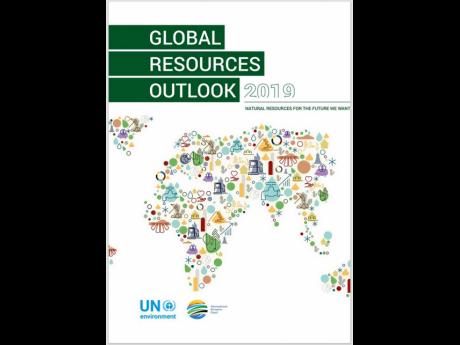Earth Today | Overcoming inequality a key success factor for sustainable resource use
THE NEED to address prevailing inequalities that accompany and result from current patterns of resource use is being flagged as essential, not only to the environmental agenda, but to safeguarding humanity over the long term.
This is according to the Global Resources Outlook 2024 report of the United Nations Environment Programme (UNEP).
“The current resource use model leads to a highly unequal distribution of socio-economic benefits and environmental impacts,” said the report titled Bend the trend: Pathways to a liveable planet as resource use spikes.
“It is therefore critical to explicitly acknowledge the resource perspective to meet the global goals on human development, climate, biodiversity, pollution and land degradation, and to develop systemic actions that address common drivers of climate change, biodiversity loss and unsustainable resource use,” the publication added.
According to the report, high-income countries use six times more materials per capita and are responsible for 10 times more climate impacts per capita than low-income countries.
“This inequality must be addressed as a core element of any global sustainability effort. The per capita material footprint of high-income countries, the highest of all income groups, has remained relatively constant since 2000,” the report said.
“Upper-middle-income countries have more than doubled their material footprint per capita, approaching high-income levels, while their per capita impacts continue to be lower than high-income countries,” it added.
DEARTH OF TARGETS
Further, the report said high-income countries displace environmental impacts to all other income country groups through trade, while “per capita resource use and related environmental impacts in low-income countries has remained comparatively low and almost unchanged since 1995”.
The report – the work of the International Resource Panel of UNEP – said it is therefore also necessary to course correct on the representation of resource use and management in climate change and biodiversity strategies.
Findings from its 2019 edition, for example, revealed that the extraction and initial processing of materials were responsible for 90 per cent of land-based biodiversity loss and water stress and 50 per cent of climate impacts. The 2019 edition had as its focus ‘Natural resources for the future we want’.
“Despite this, resource use and management are currently under-represented in global, regional and national climate and biodiversity strategies, and there is a dearth of targets for guiding and evaluating how improved natural resource use and management can contribute to meeting global sustainability goals,” the report said.
At the same time, it noted that the environmental impacts of current resource use are unevenly distributed, with prevailing “major differences in the environmental impacts of consumption between various income group countries”.
According to the publication, which examines trends, impacts and distributional effects of resource use and the capacity to turn things around, adjusting resource use management “can play a decisive role in increasing human security, while meeting human needs for all”.
“The resource agenda is not just an environmental agenda. It refers to the long-term capacity of natural systems to deliver secure well-being to all, which is essential for humanity to thrive in peace.”

